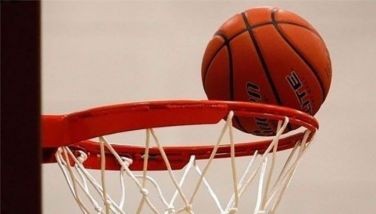Permanent impermanence
Now, the work begins.
In two years’ time, the Philippines will hopefully have a Philippine Sports Training Center, as President Duterte has signed the pertinent documents impelling its construction. The existence of the venerable Rizal Memorial Sports Complex notwithstanding, restrictions in the design make it necessary to build somewhere else. The confines of the metropolis also make it difficult – not to mention prohibitively expensive – to find a large enough tract of land for the purpose. Besides, being in a city has its own myriad distractions. The unseen burdens of air and noise pollution also hamper our athletes’ training, unnoticed. It will be of greater benefit to have the place out of the urban sprawl. The athletes are there to work, after all, not think of where to go for a good time after.
Naturally, the edifice will bring with it a sense of permanence. Not since the Marcos era have we seen a multi-sports facility (PhilSports) constructed. The main challenge of PhilSports, however, is constriction of its location, and difficulty of transportation in the area. The transportation issue has been partly alleviated by the nearby development, which has opened up access to nearby Shaw Boulevard.
What makes it difficult to build a sports complex? The paradox is that athletes naturally need to train in private, but the facility must also accommodate large crowds for events. This dichotomy of purpose adds large costs in terms of space and construction material. Furthermore, with regards to outdoor sports like athletics, football, swimming, tennis, baseball and softball, the seating is generally exposed to the elements. In this case, you have to trade away comfort for durability. In all, how many times are these outdoor venues used to accommodate spectators? When not being used for rare religious or political gatherings or school sportsfests, not that often, either.
There are some sports that make do with not needing to hold a crowd in their training facility. Martial arts, gymnastics and even bowling may be moved to other venues like convention centers and ballrooms for competitions, so their construction costs are significantly lower.
How have sports facilities changed over the last century or so? Technology has made it possible to have large stadia with retractable roofs, allowing events to be held in all sorts of weather. No such facility exists in the Philippines, where four months of rain alternate with excessive heat, adversely impacting the scheduling of events from April to September. Last year, it even rained late into December.
One thing is for sure, the centerpiece will be the track oval, likely with a football field in the middle. The monetary returns may not justify building them separately. Easier to make it a scheduling issue rather than a matter of spending hundreds of millions of pesos more on a separate venue. Events may just be alternated in the name of savings.
There are other considerations, as well. Will there be accommodations for athletes and non-athletes (family and spectators), as well? The renovation plans for PhilSports include a 30-floor athletes’ dormitory, to finally solve the problem of where to house everybody. Some baseball stadia in North America have hotels adjacent to the diamond, with a great view that selected patrons pay extra for. Again, no such place exists in the Philippines.
The Philippine Sports Training Center will also need the flexibility to adjust to changing times. The materials used for tracks, pitches and floors change over time, and will necessitate frequent change to stay world-class. If the Philippine Sports Commission, the agency in charge, partners with schools or rents out the venues to help recoup costs, it will also wear out the venue surfaces faster, another paradox. On the other hand, schools will also provide additional talent pools for future national teams. The aim is to have more and more youth using the facility, and possibly be recruited for national pools.
One major feature that the new facility’s builders should consider is accessibility, and not just for the differently-abled, but for everyone. One major flaw of sports complexes around the region is that they are not walkable. Is there a way to design the training center with a central pathway that branches off to each venue, with access to all entrances and ticket booths? Covered walkways, food stalls and plenty of greenery would also encourage people to visit, watch athletes train, and get into sports. This would make everybody’s job easier. And lastly, having pre-assigned possible camera placements for TV cameras built into the design wouldn’t hurt, either.
- Latest
- Trending

























